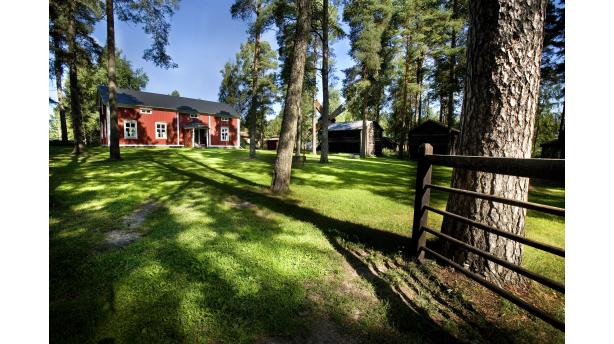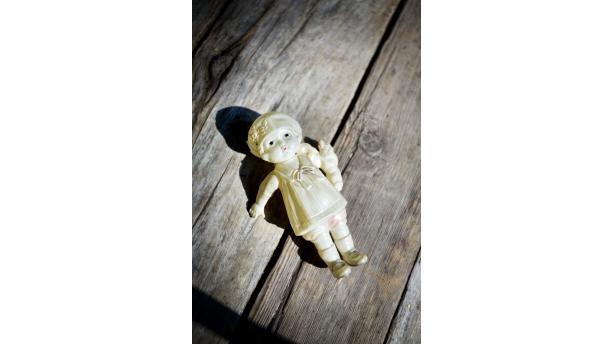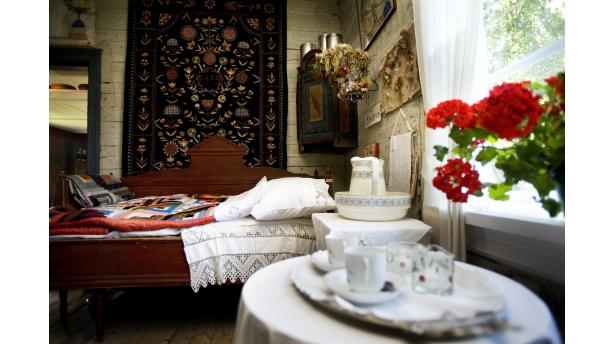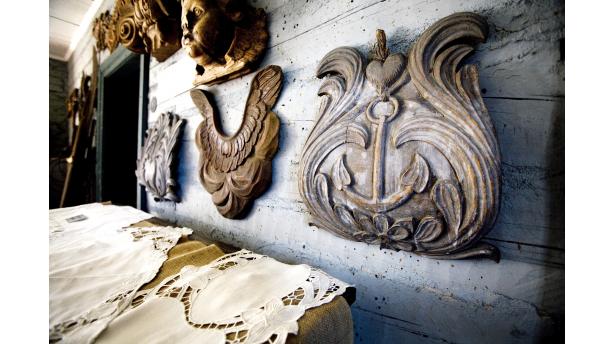Museum A-Ö » Esse Museum
Esse Museum




Did you know...
During the artisan days in July it is possible to learn and try out old work methods.
Everyday and festive items of the old time peasants recount days of yore in the Esse Museum. The traditional peasant cabin is surrounded by several 18th and 19th century outbuildings, where equipment, homemade machines and tools are displayed. On the atmospheric museum hill you can during the various summer events get acquainted with the history of Esse and the local people.
The peasant cabin of the Esse Museum originates from the year 1840 in Lappfors. It was relocated on its current site and inaugurated in 1957. The red-and-white cottage and high pine woods are surrounded by a fence made of brushwood, and there is a distinctive round porch in the cabin with a light blue ceiling and colourfully decorated double doors. The porch presumably dates back to the 17th century and originates from Bärklars in Ytteresse.The museum area used to be a part of a vicarage, and the cabin is nowadays furnished in the 1850s style with artefacts from the Esse region. Among the interesting items is for instance the beautiful bridal crown decorated with colourful pieces of paper and glitter. The wooden models depicting heads of angels, anchors and ends of pillars compose an interesting collection. The scale models were once made as suggestions for various church ornaments. The cabin’s decorated cupboards and benches attached to the walls are filled with diverse old time utensils. The splash-painted log walls of the chamber are embellished with textiles and old photographs.
The children’s world is represented by beautiful painted and grained wooden cradles, baby carriages with weaved baskets and gutta-percha dolls made of material preceding plastic. Large families of six, seven or eight siblings used to be quite common.
In the courtyard are some grey and unpainted log buildings, where you can familiarize yourself with the different tools used in farming and housekeeping, such as fishing equipment. You can see there for instance the threshing machine engine made in 1918 by the multi-talented Emil Punsar from Ytteresse. Many of the outbuildings, for example the smoke sauna, the loft, the smithy and the grain barn, date back to the 18th century. On the fringes of the museum area stands a 19th century windmill, and in the corner of the well taken care of garden is a small herbal garden.
During the annual homestead festival in July you can get acquainted with Esse and its people. The artisan days in July offer an opportunity to learn from old methods and procedures. The Esse local association also arranges during the summer months theme evenings, sing-along occasions, music evenings and folk musician events. The association tends to the local history archive, the loan magazine next to the church, the Vadabro cabin nearby the cemetary, which used to function as a soldier’s cottage, the Osobacka cabin in Ytteresse and the transformer building near Brännbacka from the year 1948.



